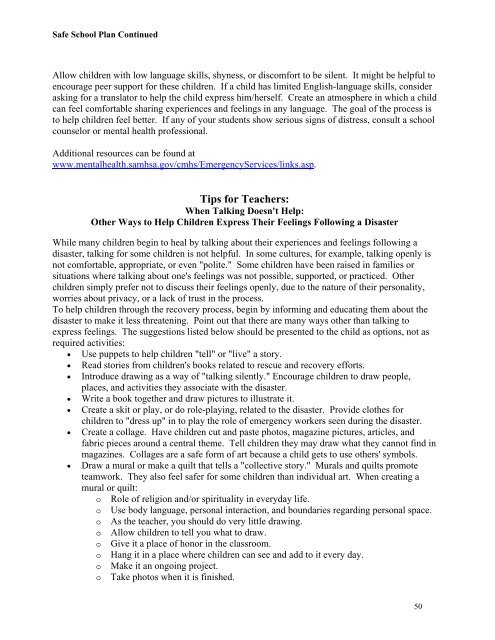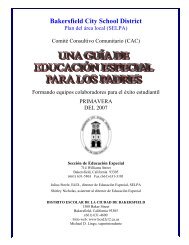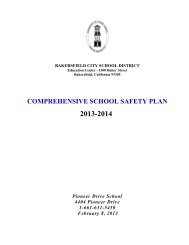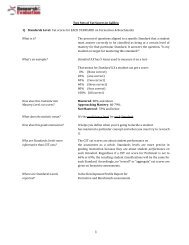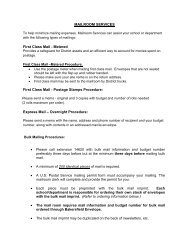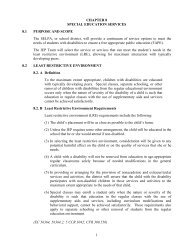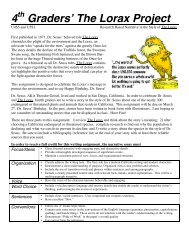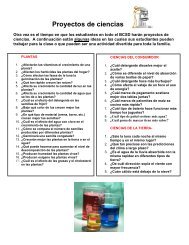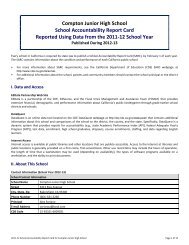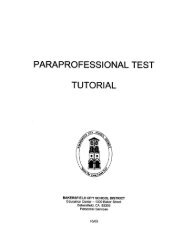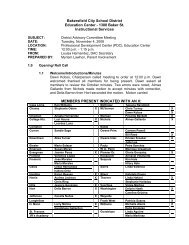Thorner - BCSD Static Server - Bakersfield City School District
Thorner - BCSD Static Server - Bakersfield City School District
Thorner - BCSD Static Server - Bakersfield City School District
You also want an ePaper? Increase the reach of your titles
YUMPU automatically turns print PDFs into web optimized ePapers that Google loves.
Safe <strong>School</strong> Plan ContinuedAllow children with low language skills, shyness, or discomfort to be silent. It might be helpful toencourage peer support for these children. If a child has limited English-language skills, considerasking for a translator to help the child express him/herself. Create an atmosphere in which a childcan feel comfortable sharing experiences and feelings in any language. The goal of the process isto help children feel better. If any of your students show serious signs of distress, consult a schoolcounselor or mental health professional.Additional resources can be found atwww.mentalhealth.samhsa.gov/cmhs/EmergencyServices/links.asp.Tips for Teachers:When Talking Doesn't Help:Other Ways to Help Children Express Their Feelings Following a DisasterWhile many children begin to heal by talking about their experiences and feelings following adisaster, talking for some children is not helpful. In some cultures, for example, talking openly isnot comfortable, appropriate, or even "polite." Some children have been raised in families orsituations where talking about one's feelings was not possible, supported, or practiced. Otherchildren simply prefer not to discuss their feelings openly, due to the nature of their personality,worries about privacy, or a lack of trust in the process.To help children through the recovery process, begin by informing and educating them about thedisaster to make it less threatening. Point out that there are many ways other than talking toexpress feelings. The suggestions listed below should be presented to the child as options, not asrequired activities: Use puppets to help children "tell" or "live" a story. Read stories from children's books related to rescue and recovery efforts. Introduce drawing as a way of "talking silently." Encourage children to draw people,places, and activities they associate with the disaster. Write a book together and draw pictures to illustrate it. Create a skit or play, or do role-playing, related to the disaster. Provide clothes forchildren to "dress up" in to play the role of emergency workers seen during the disaster. Create a collage. Have children cut and paste photos, magazine pictures, articles, andfabric pieces around a central theme. Tell children they may draw what they cannot find inmagazines. Collages are a safe form of art because a child gets to use others' symbols. Draw a mural or make a quilt that tells a "collective story." Murals and quilts promoteteamwork. They also feel safer for some children than individual art. When creating amural or quilt:o Role of religion and/or spirituality in everyday life.o Use body language, personal interaction, and boundaries regarding personal space.o As the teacher, you should do very little drawing.o Allow children to tell you what to draw.o Give it a place of honor in the classroom.o Hang it in a place where children can see and add to it every day.o Make it an ongoing project.o Take photos when it is finished.50


